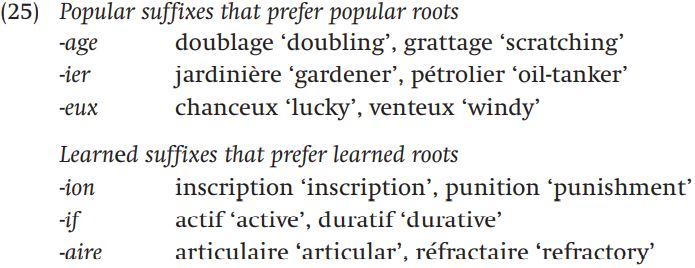

Grammar


Tenses


Present

Present Simple

Present Continuous

Present Perfect

Present Perfect Continuous


Past

Past Simple

Past Continuous

Past Perfect

Past Perfect Continuous


Future

Future Simple

Future Continuous

Future Perfect

Future Perfect Continuous


Parts Of Speech


Nouns

Countable and uncountable nouns

Verbal nouns

Singular and Plural nouns

Proper nouns

Nouns gender

Nouns definition

Concrete nouns

Abstract nouns

Common nouns

Collective nouns

Definition Of Nouns

Animate and Inanimate nouns

Nouns


Verbs

Stative and dynamic verbs

Finite and nonfinite verbs

To be verbs

Transitive and intransitive verbs

Auxiliary verbs

Modal verbs

Regular and irregular verbs

Action verbs

Verbs


Adverbs

Relative adverbs

Interrogative adverbs

Adverbs of time

Adverbs of place

Adverbs of reason

Adverbs of quantity

Adverbs of manner

Adverbs of frequency

Adverbs of affirmation

Adverbs


Adjectives

Quantitative adjective

Proper adjective

Possessive adjective

Numeral adjective

Interrogative adjective

Distributive adjective

Descriptive adjective

Demonstrative adjective


Pronouns

Subject pronoun

Relative pronoun

Reflexive pronoun

Reciprocal pronoun

Possessive pronoun

Personal pronoun

Interrogative pronoun

Indefinite pronoun

Emphatic pronoun

Distributive pronoun

Demonstrative pronoun

Pronouns


Pre Position


Preposition by function

Time preposition

Reason preposition

Possession preposition

Place preposition

Phrases preposition

Origin preposition

Measure preposition

Direction preposition

Contrast preposition

Agent preposition


Preposition by construction

Simple preposition

Phrase preposition

Double preposition

Compound preposition

prepositions


Conjunctions

Subordinating conjunction

Correlative conjunction

Coordinating conjunction

Conjunctive adverbs

conjunctions


Interjections

Express calling interjection

Phrases

Sentences


Grammar Rules

Passive and Active

Preference

Requests and offers

wishes

Be used to

Some and any

Could have done

Describing people

Giving advices

Possession

Comparative and superlative

Giving Reason

Making Suggestions

Apologizing

Forming questions

Since and for

Directions

Obligation

Adverbials

invitation

Articles

Imaginary condition

Zero conditional

First conditional

Second conditional

Third conditional

Reported speech

Demonstratives

Determiners


Linguistics

Phonetics

Phonology

Linguistics fields

Syntax

Morphology

Semantics

pragmatics

History

Writing

Grammar

Phonetics and Phonology

Semiotics


Reading Comprehension

Elementary

Intermediate

Advanced


Teaching Methods

Teaching Strategies

Assessment
Lexical strata: Dutch and French
المؤلف:
Rochelle Lieber
المصدر:
Introducing Morphology
الجزء والصفحة:
172-9
25-1-2022
1691
Dutch and French
Dutch and English are closely related languages, and they share a history of contact with French and Latin. It is therefore not surprising that the morphology of Dutch exhibits two lexical strata, just as English does. We’ll give just a brief illustration here. In Dutch, the suffix -heid ‘-ness’ is of native origin, and -iteit ‘-ity’ is non-native. As we saw in English, the native suffix attaches easily either to native or non-native bases, but the non-native one can only occur on non-native bases (Booij 2002: 95):

As in English, non-native affixes can occur on either bound bases or free words, whereas native affixes only occur on free words. And as in English, if a word contains both native and non-native affixes, the native ones must occur outside the non-native ones.
What may be somewhat more surprising is that French, a language itself descended directly from Latin, also shows signs of lexical strata (Huot 2005). French suffixes can be divided into those that are called ‘popular’ (in French ‘populaire’) and those that are called ‘learned’ (in French ‘savant’). The former have descended from Latin undergoing all the sound changes that the vocabulary of French has been subject to. The latter come from scholarly Latin by borrowing later in the history of French. Popular suffixes typically attach to popular roots, and learned suffixes to learned roots (Huot 2005: 65):

Popular suffixes sometimes attach to learned roots, but learned suffixes do not attach to popular roots:

Popular suffixes tend not to attach to already suffixed words, but learned suffixes can sometimes attach to other learned suffixes:

And finally, popular roots sometimes have corresponding learned allomorphs:

So what we see here is that there are two sets of affixes that display somewhat different patterns of behavior. The lexicon of French thus gives us another example where morphology is not neat and homogeneous, but instead seems to be organized into two relatively discrete layers.
 الاكثر قراءة في Morphology
الاكثر قراءة في Morphology
 اخر الاخبار
اخر الاخبار
اخبار العتبة العباسية المقدسة

الآخبار الصحية















 قسم الشؤون الفكرية يصدر كتاباً يوثق تاريخ السدانة في العتبة العباسية المقدسة
قسم الشؤون الفكرية يصدر كتاباً يوثق تاريخ السدانة في العتبة العباسية المقدسة "المهمة".. إصدار قصصي يوثّق القصص الفائزة في مسابقة فتوى الدفاع المقدسة للقصة القصيرة
"المهمة".. إصدار قصصي يوثّق القصص الفائزة في مسابقة فتوى الدفاع المقدسة للقصة القصيرة (نوافذ).. إصدار أدبي يوثق القصص الفائزة في مسابقة الإمام العسكري (عليه السلام)
(نوافذ).. إصدار أدبي يوثق القصص الفائزة في مسابقة الإمام العسكري (عليه السلام)


















